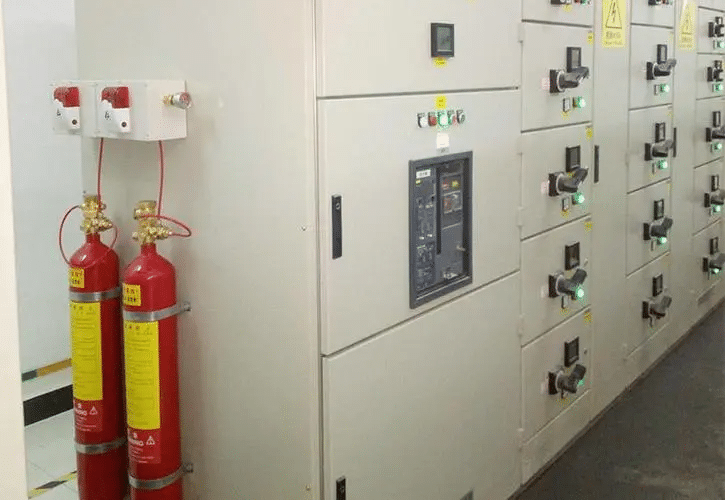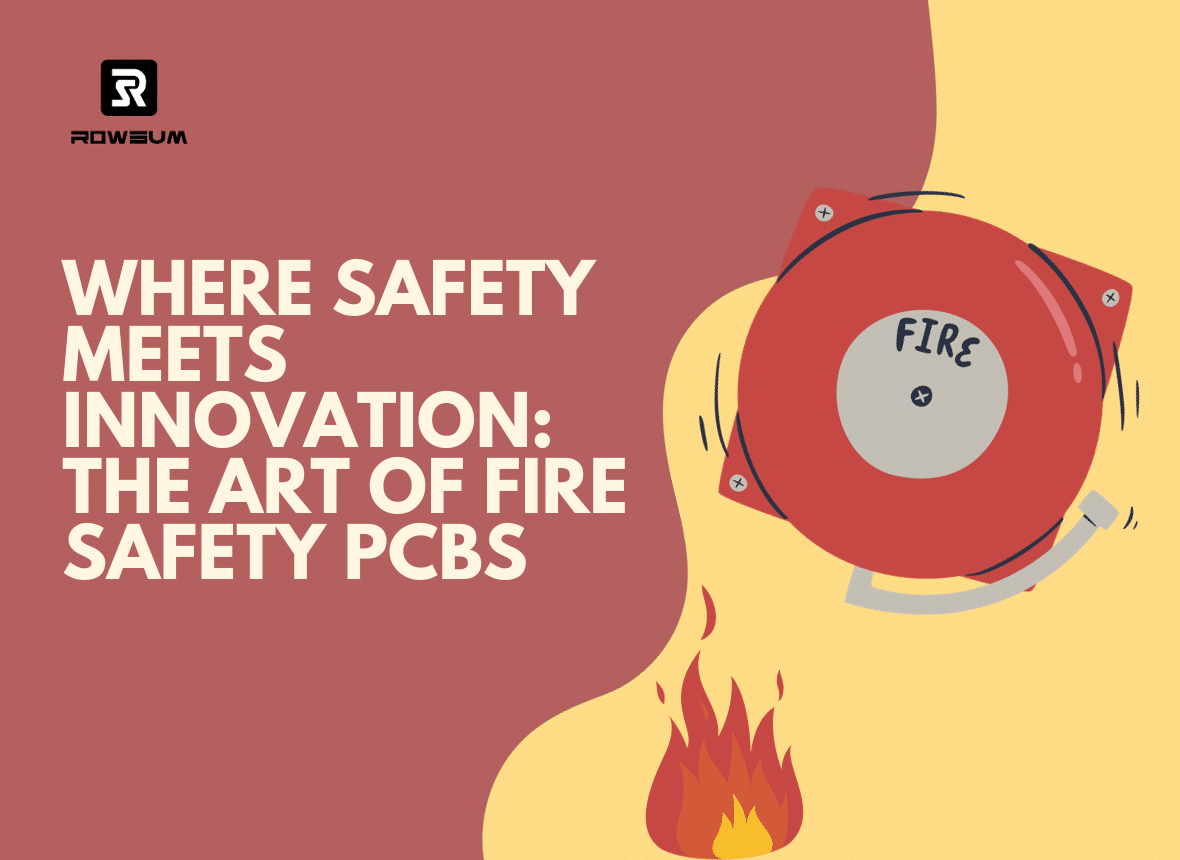Introduction to PCB & PCBA in Fire Safety
In the realm of fire safety, where every component’s performance is critical, how do you navigate the complexities of PCB and PCBA selection to ensure top-tier reliability and efficiency? For those in the trenches of designing and procuring fire safety equipment, the stakes couldn’t be higher. The right PCB and PCBA not only fulfill a functional requirement but also embody the commitment to safety and innovation.
Imagine having access to PCBs and PCBAs that elevate your fire safety systems beyond conventional limits. In this exploration, we delve into how cutting-edge PCB and PCBA technologies are revolutionizing fire safety equipment. We’re talking about materials and designs that withstand extreme conditions, and assemblies that integrate seamlessly with the latest in fire detection and suppression technologies.
Design Considerations for Fire Safety PCBs
Material Selection for PCBs and Components
Prioritizing Quality in PCB Material Selection: While FR-4 is a popular choice for its flame retardant properties in fire safety applications, it’s crucial to consider the source. Opting for FR-4 materials from reputable brands can make a significant difference in quality and reliability. These brands have established a track record of consistency and performance, which is essential in applications where safety is paramount.
Component Choices for Enhanced Fire Resistance: In selecting components, the focus on materials capable of withstanding high temperatures is key. Ceramic capacitors and resistors are often favored for their proven heat resistance in fire safety scenarios. The reliability of these components under extreme conditions is a testament to their suitability for such critical applications.
Advanced Thermal Management Solutions
Innovative Approaches to Heat Dissipation: Advanced solutions like embedded heat pipes or liquid cooling systems are worth considering for high-power fire safety systems. These methods have demonstrated effectiveness in challenging environments, ensuring performance and safety are maintained.
Compliance and Beyond in Safety Standards
Aiming for the Highest Safety Standards: Meeting standards like UL 94V-0 is essential, but striving for additional safety features, such as flame-retardant coatings and self-extinguishing materials, can significantly enhance the safety level of PCBs. This proactive approach goes beyond basic compliance, offering superior safety and reliability.
Smart Integration with Cutting-Edge Technologies
Enhancing Fire Safety with Smart Technologies: The integration of IoT and AI into fire safety systems is not just a trend but a practical step towards smarter, more responsive systems. Designs that enable seamless integration with sensors and control systems for real-time monitoring and predictive maintenance are increasingly crucial in the evolution of fire safety technologies.
| Region | Standards | Legislation | Marking |
|---|---|---|---|
| UK | EN54 | CPR (Construction Products | UKCA |
| Regulation) | |||
| Europe | EN54 | EU Construction Products | CE |
| Regulation (CPR) | |||
| Australasia | AS 7240 | Australian Requirements | Checkmark |
| Middle East | EN54, ISO 7240 | UAE Fire Code | UAE Fire Code Symbol |
| USA/Canada | UL | NFPA, State Regulations | UL |
Manufacturing Process and Quality Assurance in Fire Safety PCBs
Emphasizing Robust Design and Performance
Critical for Saving Lives: In fire safety applications, PCBs are more than just circuit boards; they are critical components in life-saving devices like smoke detectors and emergency control systems. Their failure is not an option, as it directly impacts the effectiveness of fire safety measures. The reliability of these PCBs is paramount, and every design decision must prioritize this aspect.
Beyond Standard Specifications: Standard IPC Class 2 specifications may be adequate for general electronics, but fire safety PCBs demand more. IPC Class 3 or higher standards are essential for these applications, as they ensure higher reliability and durability under extreme conditions, such as high temperatures and corrosive environments often encountered in fire emergencies.
Key Specifications for Enhanced Reliability
25 Micron Nominal Hole Plating: The standard 20-micron copper plating is often insufficient for the thermal and mechanical stresses encountered in fire safety applications. Increasing this to 25 microns significantly enhances the PCB’s ability to withstand thermal cycling and mechanical stress, reducing the likelihood of circuit failures in critical situations.
Specified Soldermask Thickness: A thicker soldermask goes beyond basic protection. It plays a vital role in shielding the PCB from harsh chemicals and gases released in fire scenarios. This enhanced protection is crucial for maintaining circuit integrity over the PCB’s lifespan.
Stringent Quality Control and Material Selection
Avoiding Repairs for Reliability: In fire safety PCBs, repairs can be a liability. Techniques like track welding or open circuit repair, while common in less critical applications, can introduce weak points in the PCB. These weak points might fail under the extreme conditions of fire safety scenarios, hence the emphasis on getting it right the first time.
Material Selection: The choice of materials is not just about performance but also about consistency and predictability under stress. Using high-grade, internationally recognized materials ensures that the PCBs can consistently perform under the specific demands of fire safety applications, including resistance to high temperatures and corrosive substances.
Factory Performance and Sustainability
Factory Oversight for Quality Assurance: The manufacturing process of fire safety PCBs requires meticulous oversight. This includes not just adherence to technical specifications but also regular audits and inspections to ensure consistent quality. The factories must have protocols in place to identify and rectify any deviations from the set standards promptly.
Sustainability in PCB Manufacturing: Sustainable practices in PCB manufacturing are increasingly becoming a marker of quality and reliability. These practices often involve using environmentally friendly materials and processes that also enhance the PCB’s performance and durability, making them more suitable for fire safety applications.

Cost-Effectiveness and Sustainability in Fire Safety PCBs
Advanced Manufacturing Techniques for Cost Reduction
Refining Automation and AI Integration: In the context of fire safety PCBs, the thoughtful integration of automation and AI can offer significant benefits. Understanding how these technologies are applied can guide better decision-making. AI-driven tools can assist in selecting PCBs with optimized designs for heat management and space utilization, leading to more efficient and cost-effective solutions. Additionally, awareness of automated quality checks in the manufacturing process can be a key factor in choosing a reliable supplier, ensuring high-quality PCBs that align with both cost-effectiveness and sustainability goals. This knowledge empowers decision-makers to choose PCBs that are not only technically superior but also economically and environmentally sound.
Rethinking Design for Material Efficiency
Optimized PCB Design for Efficiency: The role of efficient PCB design in reducing material usage is more crucial than ever. Strategies like minimizing PCB size while ensuring full functionality, or adopting multi-layer designs, can substantially decrease the use of materials. This approach is not only cost-effective but also reduces the environmental impact of the manufacturing process.
Sustainable Material Innovations
Incorporating Bio-based and Recycled Materials: The shift towards sustainable materials in PCB manufacturing is a significant step forward. The adoption of bio-based or recycled materials for PCB substrates offers an environmentally friendly alternative to conventional materials. These innovative materials not only comply with safety standards but also contribute to a more sustainable manufacturing process, in line with global environmental objectives.
Lifecycle Analysis for Long-Term Savings
Prioritizing Durability for Cost Savings: A focus on the total lifecycle cost of PCBs is vital for long-term economic and environmental sustainability. Opting for durable and long-lasting PCBs might mean a higher initial investment, but it can result in considerable savings over time. This approach aligns with sustainable practices by reducing the frequency of replacements and maintenance, thereby minimizing waste and resource consumption.
Conclusion
Navigating the intricate world of fire safety PCBs and PCBAs is akin to a high-stakes chess game, where every move counts and precision is key. This article has journeyed through the nuances of choosing the right components, balancing cost-effectiveness with sustainability, and the importance of reliable manufacturing processes. It’s a landscape filled with challenges, but also ripe with opportunities for those who know where to look.
Why Choose Rowsum?
In this complex game, Rowsum emerges as a strategic ally. We’re not just another manufacturer; we’re your partner in crafting solutions that resonate with quality, innovation, and a deep understanding of your needs. With Rowsum, you’re choosing a path lined with expertise, customer-focused service, and a commitment to excellence that mirrors the critical nature of fire safety. Let’s embark on this journey together, towards a future where safety and efficiency coexist seamlessly.










